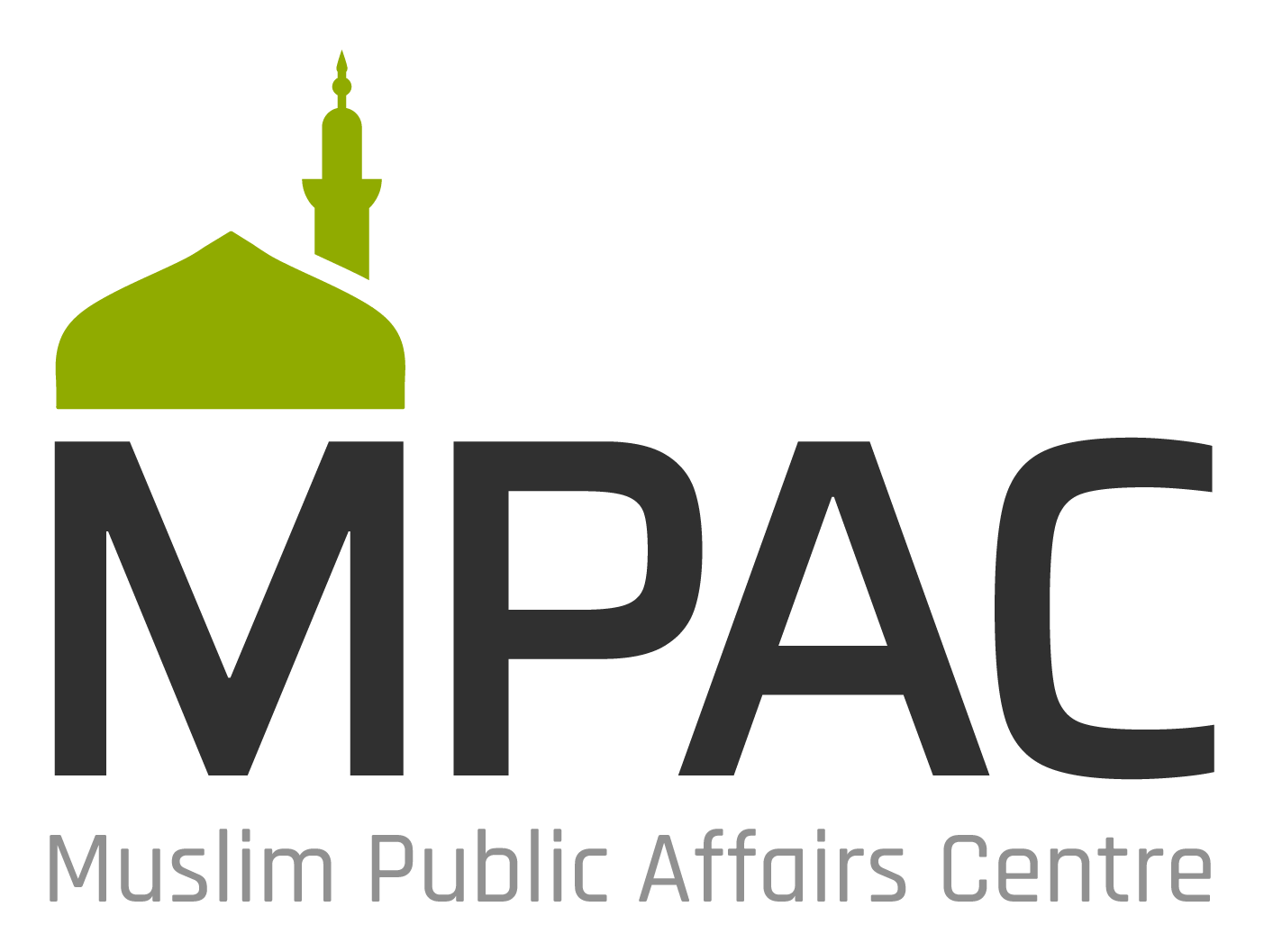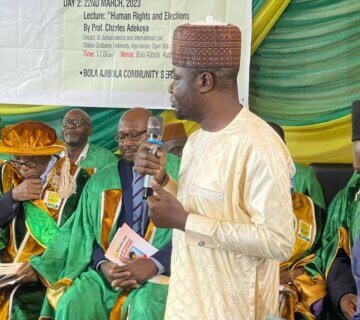Introduction
The conflict between Palestinian Arabs and Jews is a modern phenomenon, which began around the turn of the 20th century. Although these two groups have different religions (Palestinians include Muslims, Christians and Druze), religious differences are not the cause of the conflict. It is essentially a struggle over land. Until 1948, the area that both groups claimed was known internationally as Palestine. But following the war of 1948-49, this land was divided into three parts: the state of Israel, the West Bank (of the Jordan River) and the Gaza Strip.
This is a small area: approximately 10,000 square miles, or about the size of the state of Maryland. The competing claims are not reconcilable if one group exercises exclusive political control over the total territory.
|
Palestinians do not believe that they should forfeit their land to compensate Jews for Europe’s crimes against them. |
Jewish claims to this land are based on the biblical promise to Abraham and his descendants, on the fact that this was the historical site of the Jewish kingdom of Israel (which was destroyed by the Roman Empire), and on Jews’ need for a haven from European anti-Semitism. Palestinian Arabs’ claims to the land are based on continuous residence in the country for hundreds of years and the fact that they represented the demographic majority. They reject the notion that a biblical-era kingdom constitutes the basis for a valid modern claim. If Arabs engage the biblical argument at all, they maintain that since Abraham’s son Ishmael is the forefather of the Arabs, then God’s promise of the land to the children of Abraham includes Arabs as well. They do not believe that they should forfeit their land to compensate Jews for Europe’s crimes against them.
The Land and the People
In the 19th century, following a trend that began earlier in Europe, people around the world began to identify themselves as nations and to demand national rights, foremost the right to self-rule in a state of their own (self-determination and sovereignty). Jews and Palestinians both began to develop a national consciousness, and mobilized to achieve national goals. Because Jews were spread across the world (in diaspora), their national movement, Zionism, entailed the identification of a place where Jews could come together through the process of immigration and settlement. Palestine seemed the logical and optimal place, since this was the site of Jewish origin. The Zionist movement began in 1882 with the first wave of European Jewish immigration to Palestine.
At that time, the land of Palestine was part of the Ottoman Empire. However, this area did not constitute a single political unit. The northern districts of Acre and Nablus were part of the province of Beirut. The district of Jerusalem was under the direct authority of the Ottoman capital of Istanbul because of the international significance of the cities of Jerusalem and Bethlehem as religious centers for Muslims, Christians and Jews. According to Ottoman records, in 1878 there were 462,465 subject inhabitants of the Jerusalem, Nablus and Acre districts: 403,795 Muslims (including Druze), 43,659 Christians and 15,011 Jews. In addition, there were perhaps 10,000 Jews with foreign citizenship (recent immigrants to the country), and several thousand Muslim Arab nomads (bedouin) who were not counted as Ottoman subjects. The great majority of the Arabs (Muslims and Christians) lived in several hundred rural villages. Jaffa and Nablus were the largest and economically most important Arab towns.
Until the beginning of the 20th century, most Jews living in Palestine were concentrated in four cities with religious significance: Jerusalem, Hebron, Safad and Tiberias. Most of them observed traditional, orthodox religious practices. Many spent their time studying religious texts and depended on the charity of world Jewry for survival. Their attachment to the land was religious rather than national, and they were not involved in — or supportive of — the Zionist movement which began in Europe and was brought to Palestine by immigrants. Most of the Jews who emigrated from Europe lived a more secular lifestyle and were committed to the goals of creating a Jewish nation and building a modern, independent Jewish state. By the outbreak of World War I (1914), the population of Jews in Palestine had risen to about 60,000, about 33,000 of whom were recent settlers. The Arab population in 1914 was 683,000.
Zionism
Zionism, or Jewish nationalism, is a modern political movement. Its core beliefs are that all Jews constitute one nation (not simply a religious or ethnic community) and that the only solution to anti-Semitism is the concentration of as many Jews as possible in Palestine/Israel and the establishment of a Jewish state there. The World Zionist Organization, established by Theodor Herzl in 1897, declared that the aim of Zionism was to establish “a national home for the Jewish people secured by public law.”
|
|
Zionism drew on Jewish religious attachment to Jerusalem and the Land of Israel (Eretz Israel). But the politics of Zionism was influenced by nationalist ideology, and by colonial ideas about Europeans’ rights to claim and settle other parts of the world.
Zionism gained adherents among Jews and support from the West as a consequence of the murderous anti-Jewish riots (known as pogroms) in the Russian Empire in the late 19th and early 20th centuries. The Nazi genocide (mass murder) of European Jews during World War II killed over six million, and this disaster enhanced international support for the creation of a Jewish state.
There are several different forms of Zionism. From the 1920s until the 1970s, the dominant form was Labor Zionism, which sought to link socialism and nationalism. By the 1920s, Labor Zionists in Palestine established the kibbutz movement (a kibbutz is a collective commune, usually with an agricultural economy), the Jewish trade union and cooperative movement, the main Zionist militias (the Haganah and Palmach) and the political parties that ultimately coalesced in the Israeli Labor Party in 1968.
|
David Ben-Gurion reading the proclamation of Israel’s establishment, May 14, 1948, in Tel Aviv. The photo is of Theodor Herzl. |
The top leader of Labor Zionism was David Ben-Gurion, who became the first Prime Minister of Israel.
A second form of Zionism was the Revisionist movement led by Vladimir Jabotinsky. They earned the name “Revisionist” because they wanted to revise the boundaries of Jewish territorial aspirations and claims beyond Palestine to include areas east of the Jordan River. In the 1920s and 1930s, they differed from Labor Zionists by declaring openly the objective to establish a Jewish state (rather than the vaguer formula of a “national home”) in Palestine. And they believed that armed force would be required to establish such a state. Their pre-state organizations that included the Betar youth movement and the ETZEL (National Military Organization) formed the core of what became the Herut (Freedom) Party after Israeli independence. This party subsequently became the central component of the Likud Party, the largest right wing Israeli party since the 1970s.
Although many Jews became Zionists by the early 20th century, until the rise of Adolf Hitler in Germany and the institution of a “Final Solution” to exterminate world Jewry, most Jews were not Zionists. Most orthodox Jews were anti-Zionist. They believed that only God should reunite Jews in the Promised Land, and regarded Zionism as a violation of God’s will. Some Jews in other parts of the world, including the United States, opposed Zionism out of concern that their own position and rights as citizens in their countries would be at risk if Jews were recognized as a distinct national (rather than religious) group. But the horrors of the Holocaust significantly diminished Jewish opposition or antipathy to Zionism, and following World War II most Jews throughout the world came to support the Zionist movement and demand the creation of an independent Jewish state.
|
Israel’s victory in the 1967 war gave rise to a more religious form of Zionism. |
Although orthodox Jews continued to oppose the creation of a Jewish state for several more decades, they supported mass settlement of Jews in Palestine as a means of strengthening and protecting the community. And following the 1967 Arab-Israeli War, most orthodox Jews who previously had resisted Zionism adopted the belief that Israel’s overwhelming victory in the war was a sign of God’s support, and a fulfillment of God’s promise to bring about the Messianic era. The areas captured and occupied in 1967, especially the West Bank, were important to religious Jews because they are the core of the biblical Land of Israel (Judea and Samaria). Consequently, Israel’s victory in 1967 gave rise to a more religious variation of Zionism. Some existing political parties representing orthodox Jews came to embrace religious nationalism, and new parties and movements formed to advocate Israel’s permanent control and extensive Jewish settlement in the West Bank and Gaza.
The religious-nationalist parties and groups that constitute the far right of the Israeli political spectrum maintain a hard line on matters relating to territory and the Arab-Israeli conflict. They have allied with the Likud Party. Although the Labor Party also has supported Jewish settlement in the West Bank and Gaza, a key difference is a willingness to consider a territorial compromise with Palestinians as a means of ending the conflict. The Likud and its allies oppose any territorial withdrawal. In 1977, the Likud won the national election, for the first time unseating the Labor Party that had governed Israel since independence. Since then, Likud and Labor have alternated as the governing party, sometimes forming coalition governments when neither could achieve a clear electoral victory.
A minority of Jewish Israelis belongs to left-wing Zionist parties, which formed a political coalition known as Meretz in the 1980s. Meretz often joins Labor-led governments. Leftist Zionists are fully committed to maintaining Israel as a Jewish state, but tend to be more willing than the Labor Party to compromise on territorial issues, and have relatively greater sympathy for Palestinian national aspirations for a state of their own. A tiny minority of ultra-leftist Jewish Israelis identify themselves as non- or anti-Zionists. Some of them aspire to see all of Israel/Palestine transformed into a single state with citizenship and equal rights for all inhabitants, and others advocate the creation of a Palestinian state in all of the West Bank and Gaza Strip.
Middle East Report








No comment